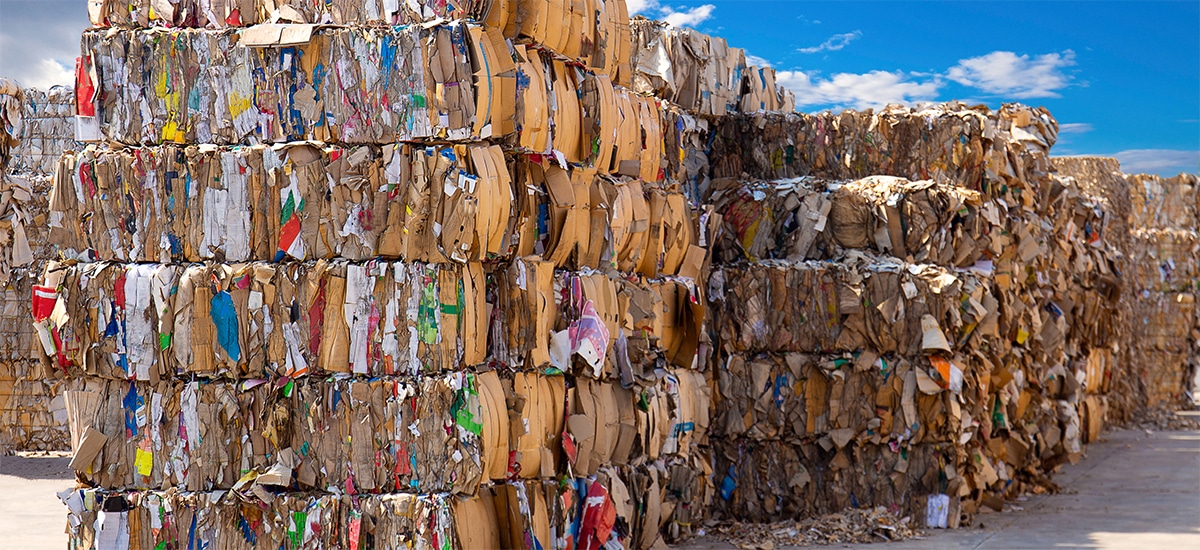
Why has China stopped taking our recyclables?
In 2018, China initiated their National Sword Policy, banning foreign waste from being exported to China that had over a 0.5% contaminant. As the global standard for waste contaminant is 1.5%, this basically prevents most waste from being sent.
For instance, a plastic bottle that still had a label or lid attached would not meet the criteria. This was the last, and most stringent, of a number of policies that have been working towards the phasing out of this system since 2013.
China was the largest importer of recyclable materials, taking in more than 30 million metric tonnes of waste from all over the world.
This last measure, however, created a global furor, as many developed nations such as the US, EU, Japan and of course, Australia, had been reliant on China to dispose of their waste. In fact, China was the largest importer of recyclable materials, taking in more than 30 million metric tonnes of waste from all over the world.
The main outcome from this issue is that these countries can longer simply rely on simply exporting waste to make all of their recycling problems go away. Instead, they will have to look at creating internal solutions and work towards their own circular economies. But, if China was thriving of importing a majority of the waste created from numerous countries around the world, why would this suddenly stop. What made China stop taking our recyclables in the first place?
The truth is, many see this as a positive development for China, rather than the loss of a lucrative industry. It’s another major step for China in its development into a first-world, modernised nation.
This policy is a major part of China’s self-declared ‘war on pollution’ begun in 2013. Before this, China was a country with one of the worst environmental impacts. Its cities produced enormous amounts of pollution, to the point that many were covered in constant smog. The United Nation’s Environmental Program was continually encouraging them to attempt to improve these conditions.
The country’s landfills would consist of towering, uncovered sky scrapers of waste, which doubled as the source of a livelihood for locals, who would sort, and resell the recyclables there. However, with such a surplus of waste, much of it inevitably entered China’s waterways and oceans, worsening the environmental situation.
Furthermore, this imported waste also impacted the living standards and public health of some of China’s poorer citizens. The documentary ‘Plastic China’ focuses on a makeshift recycling plant, located just outside of Qingdao in China. It is one of many remote toxic towns that process the world’s plastic.
Impoverished Chinese families work amongst mountains of filthy plastic rubbish, inundated with dirty water, toxic fumes and plastic of all variations. As China becomes increasingly prosperous and industrialised, continuing such a system would only be detrimental.
… with such a surplus of waste, much of it inevitably entered China’s waterways and oceans, worsening the environmental situation.
The final reason why China no longer needs to import the world’s waste is its own rapid development. It is predicted that by 2030, China will produce 3 times the amount of waste as the US does today, currently the nation which creates the most waste.
China will be forced to quickly implement systems to deal with their own waste, which should only increase further, as the country becomes increasingly modernized. Their own recyclables should produce enough raw material to feed their growing industry.
So China’s initiative to ban waste imports is a positive move for them, spurring them to improve their environmental and health standards, and giving them an opening to create a circular economy in the future. But what does it mean for the nations whose waste system was being propped up by through exports?
Well, its probably a good thing for us too.
Gayle Sloan, the chief executive of the Waste Management Association of Australia (WMAA) states, “The real opportunity in Australia is to create that circular economy that’s happening overseas and that’s what China is moving towards, where they’re saying we produce that material, we actually want to recycle that material and reuse it back in the economy,”
Equipping the food industry to grow with food processing and packaging solutions
call 1300 88 99 51
email [email protected]
room 35 Shirley Way, Epping VIC 3076
room 9 Mcilwraith St, Wetherill Park NSW 2164
room 21 Hoyle Rd, Hope Valley WA 6165
room 27 Beal Street, Meadowbrook QLD 4131
room 7 Chadderton Bvd, Epping VIC 3076
room 22 Glassford Rd, Kewdale WA 6105
room 25 Hayton Road, Wigram, Christchurch 8042, NZ
Connect with us on LinkedIn
